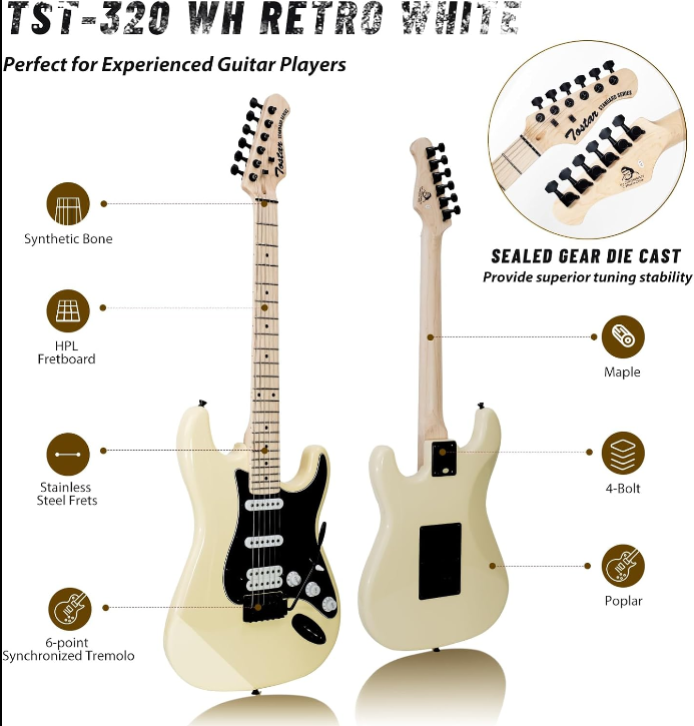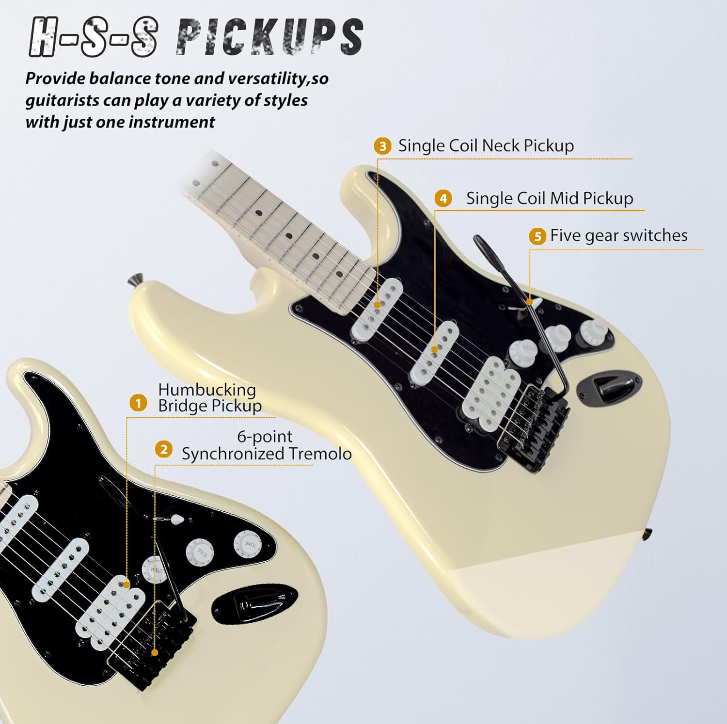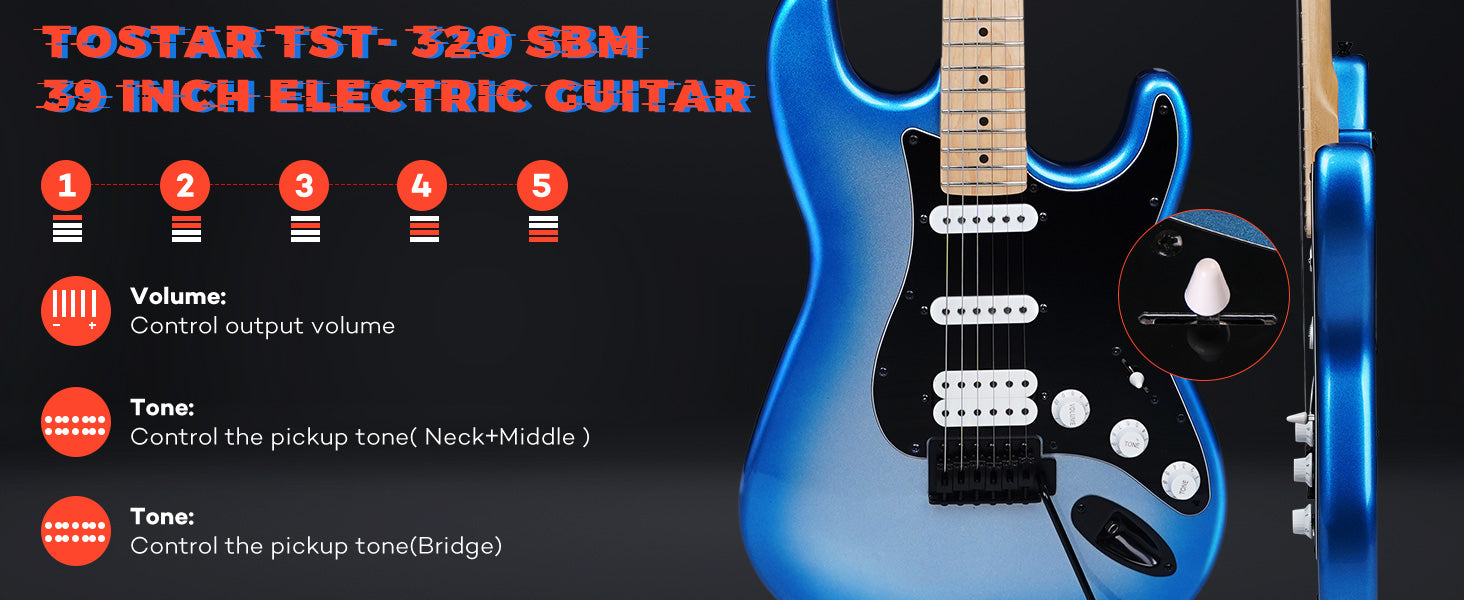










Tostar TST-320 ST Electric Guitar
- Superior Material
- Outstanding Sound
- Unique Design
- Exquisite Craftsmanship
- Ideal for Beginners
- Color:
- Sky Burst Metallic
- Fingerboard Material:
- Maple
- Body Material:
- Poplar
Fast, Free Shipping
Lifetime Customer Support
30-Day Money Back Guarantee
Secure Payment Methods

Tostar TST-320 ST Electric Guitar
Specs
Body
Body Material
– Poplar
Body Finish
– Glossy, Sky Burst Metallic
Neck
Neck Material
– Maple
Neck Shape
– “C” Shape
Fingerboard Material
– Maple
Number of Frets
– 22
Nut Material
– Black Graphite
Position Inlays
– Black Dots
Neck Finish
– Satin Urethane
Scale Length
– 25.5” (64.77cm)
Fingerboard Radius
– 12” (305mm)
Fret Size
– Jumbo, Nickle Silver
Nut Width
– 1.650” (42mm)
Truss Rod
– Head Adjust
Electronics
Pickup
– H-S-S
Controls
– 1*Master Volume, 2*Tone
Switching
– 5-Position Blade
– Position1: Neck Pickup
– Position2: Neck & Middle & Bridge Pickup
– Position3: Middle Pickup
– Position4: Middle and Bridge Pickup
– Position5: Bridge Pickup
Hardware
Finish
– Black
Bridge
– 2-Point Synchronized Tremolo Tuning
Machine
– 6 in line Sealed Die-cast
Pickguard
– 3-ply Black
Control Knobs
– White Plastic
Switch Tip
– White
Neck Plate
– 4-Bolt
Strings
– 009-.042 Gauges
Highlights
TOSTAR TST-320-SBM Electric Guitar Configuration
Popular Body Woods: Poplar is a relatively soft hardwood that is well-balanced sonically, particularly resonant or sustaining
Neck: Roasted Canadian Maple has little effect on tone, but are used to add rigidity and stability to necks, helping protect thinner, faster-playing necks against breakage and excessive bending
Fingerboard: Laurel Woods is a very hard wood with tighter grain than rosewood, making it smooth and easy to play with. Tonally, Laurel has a slightly snappier tone than rosewood and a warmer tone than ebony
Neck Construction: Bolt-on necks, as the name implies, bolted onto the body of the guitar. This allows for easier repair or replacement, which is even more stable and offers even greater sustain and resonance
Neck Shapes: C-shaped necks are the most common, offering a comfortable oval profile that works well for most players, more comfortable with their thumbs hanging over the fretboard
Pickups: Electric guitars rely on H-S-S pickups mounted on the body to generate a sound that can be amplified by a guitar amp and speakers. Pickups function as a magnetic field, and the vibration created from strumming or plucking the metal strings generates a current. This current is transmitted through the guitar’s preamp circuit, and by using a guitar cable to connect the guitar to an amp, creates an amplifiable signal



